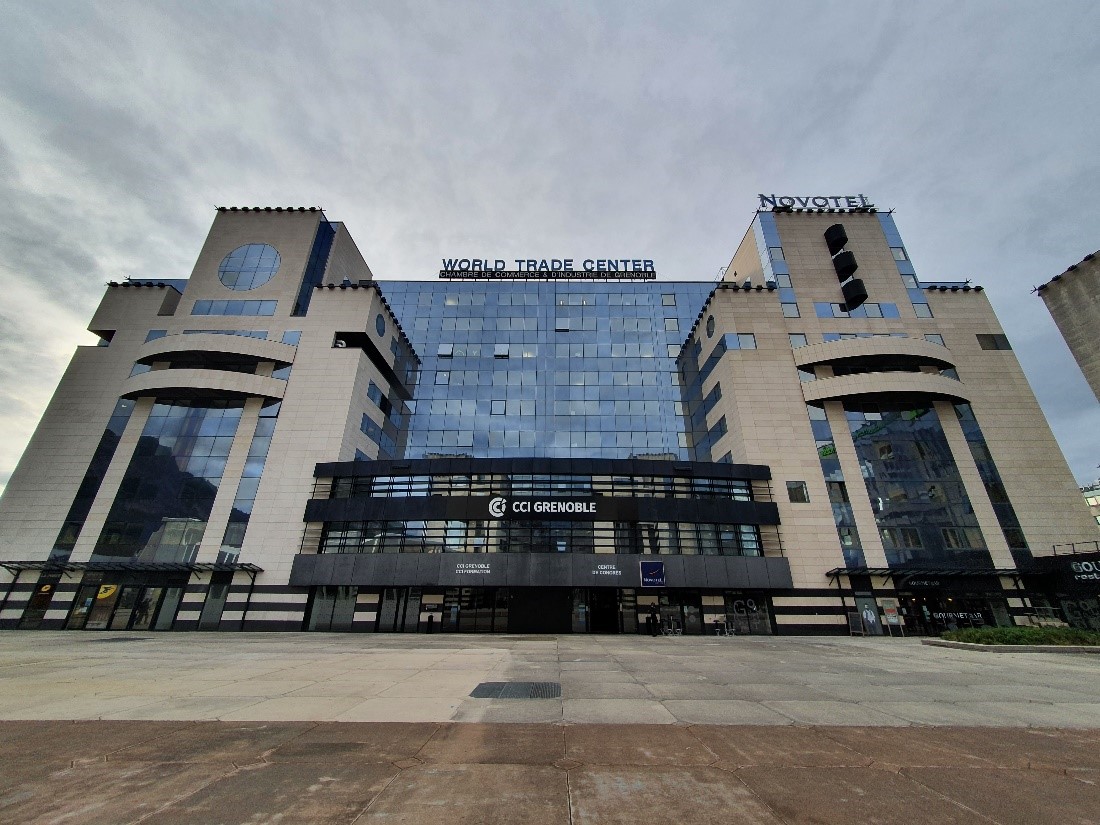This article describes the project activity at the iBECOME demonstration site World Trade Center Building in Grenoble, France. The iBECOME vBMS will be deployed in the building and the before-after conditions will be quantified and compared.
Building Information
The World Trade Center is located in the southeast of France in Grenoble, the second largest urban district in the Auvergne-Rhône-Alpes region, often referred to as the “capital of the Alps” as the first urban area of the Alpine arc. The building is owned by the CCI (Chamber of Commerce and Industry) which occupies floors 5 to 9.
The building was constructed in 1999-2000 and has a floor area of around 11,000 m2. It is mainly composed of single offices and open spaces, training and meeting rooms, and a conference centre on the first floors. The iBECOME project will focus on floors 5 to 9, which allocate up to around 80 to 90 employees.
Current Status of Building
These floors were renovated in 2020-2021: a reversible heat pump now provides both heating and cooling, instead of just a cooling unit. The fan coil units, which used to use only their electric resistance for heating, now have a hydraulic change-over coil. 7 dual-flow air handling units have been added to ensure the renewal of the air in the training centre on floors 5 and 6; single-flow extractors provide ventilation on the upper floors. The building’s only source of energy is therefore electricity.
A Schneider Electric BMS combined with automation servers and local PLCs now makes it possible to manage all the HVAC equipment, temperature setpoints, schedules and so on in a centralised way.
The heating and cooling setpoints are set at 19°C and 26°C respectively when occupied, with night and week-end setback (16°C/35°C) when unoccupied. In each room or zone, occupants can set an offset of around +/- 2°C around these global setpoints.
Air handling units are also controlled according to an occupancy schedule, in addition to local dampers that adapt flow rates according to the presence or CO2 level.
iBECOME Implementation
For the project, only the space occupied by the CCI is considered for the demonstration activities. It corresponds to floors 5 to 9 of the building.
Of these floors, the 5th and 8th have been fitted during the winter of 2022-2023 with additional sensors and sub-meters, enabling the comfort and energy optimisation service to be deployed. The other floors will serve as a reference.
The equipment installed during the retrofit was already supplied by Schneider Electric, and therefore easily compatible with the new equipment installed for the iBECOME project:
- Indoor environmental quality sensors (temperature, relative humidity, CO2 level) and presence/luminosity sensors in each room;
- some rooms equipped with window opening sensors,
- others with DALI lamps for remote lighting control;
- electrical and thermal sub-meters for the various uses involved in the project: heat pump and fan coil units, air handling units, electrical and thermal consumption of the two floors and lighting.
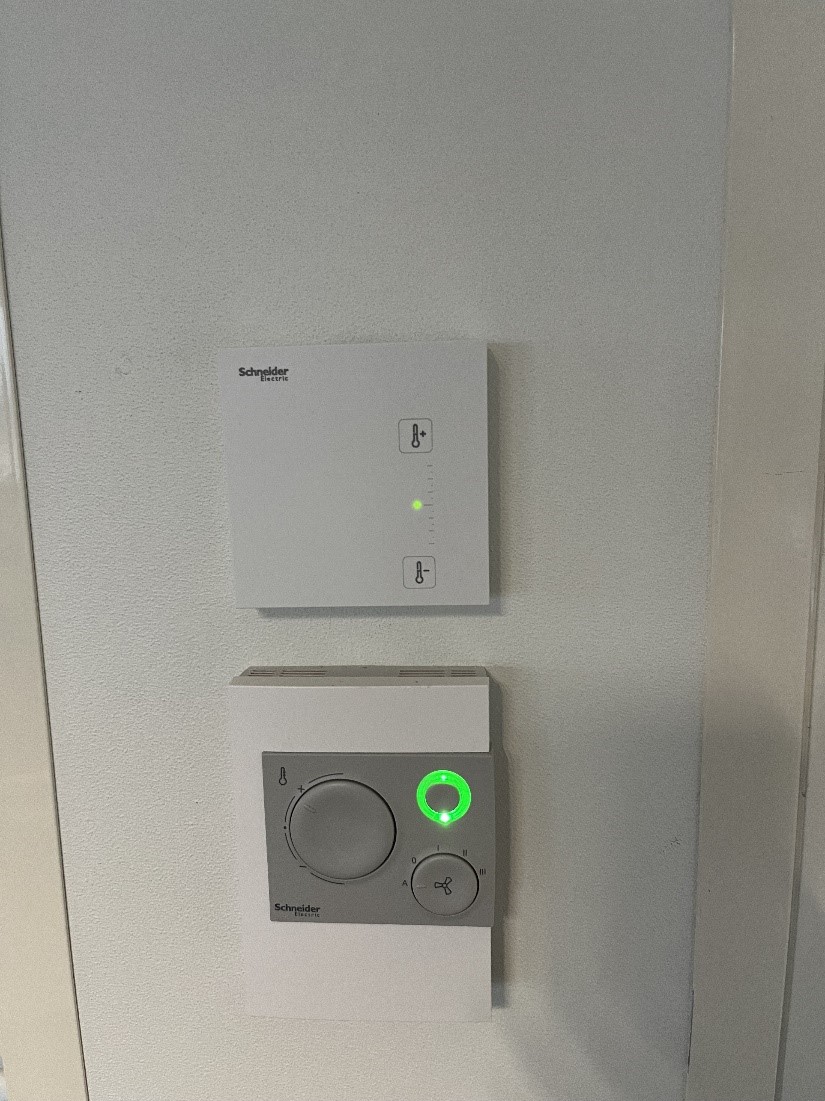
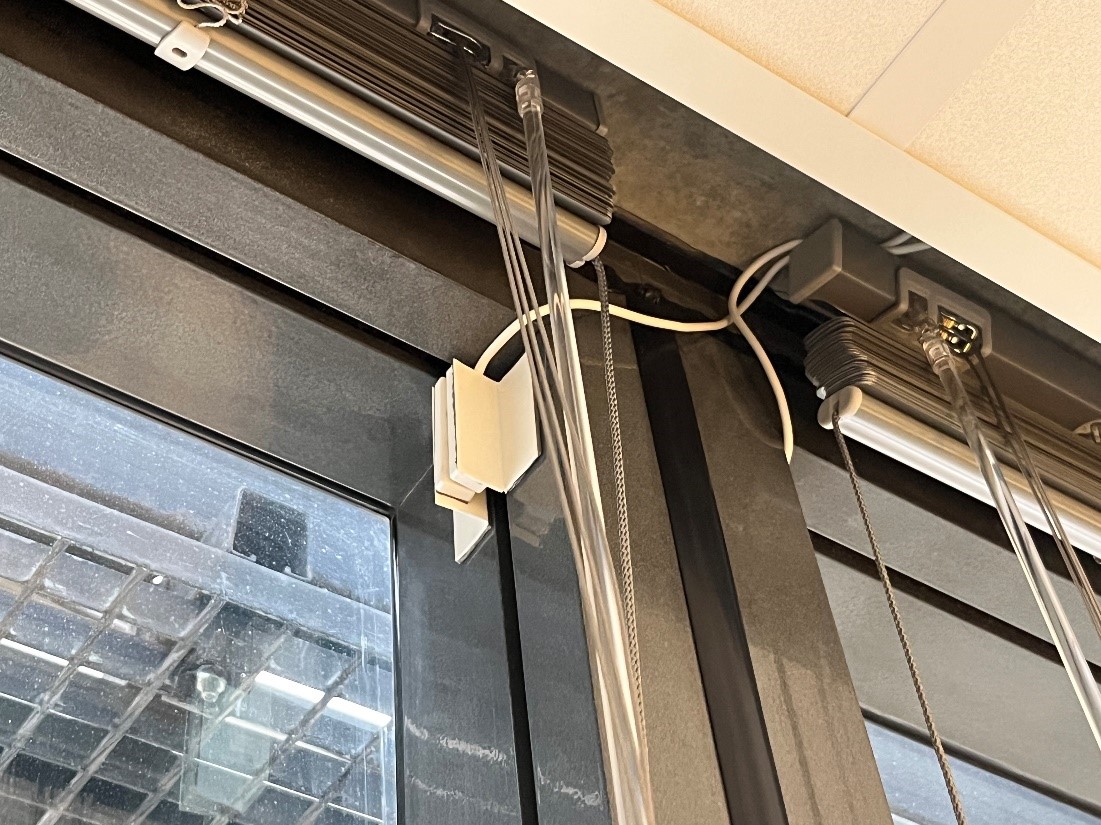
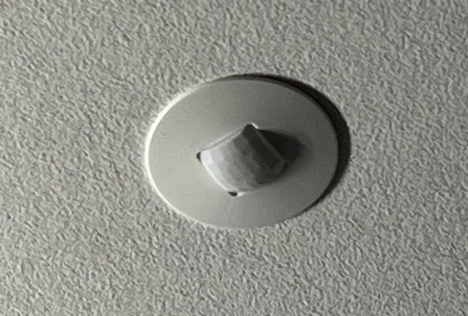
A new electrical panel incorporating an automation server, KNX and DALI gateways and a router makes it possible to communicate remotely and send all this data (over 650 points) to the project’s enterprise server, then upload it into iSCAN software via API every 5 to 15 minutes, which is used in iBECOME vBMS for modelling, storage and sharing with 3rd parties.
Finally, partner VIOTAS supplied another electrical cabinet for the deployment of the demand-response service on the heat pump: electrical sub-meter, remote communication and a relay signal enabling the heat pump to be shut down directly via the building’s BMS.
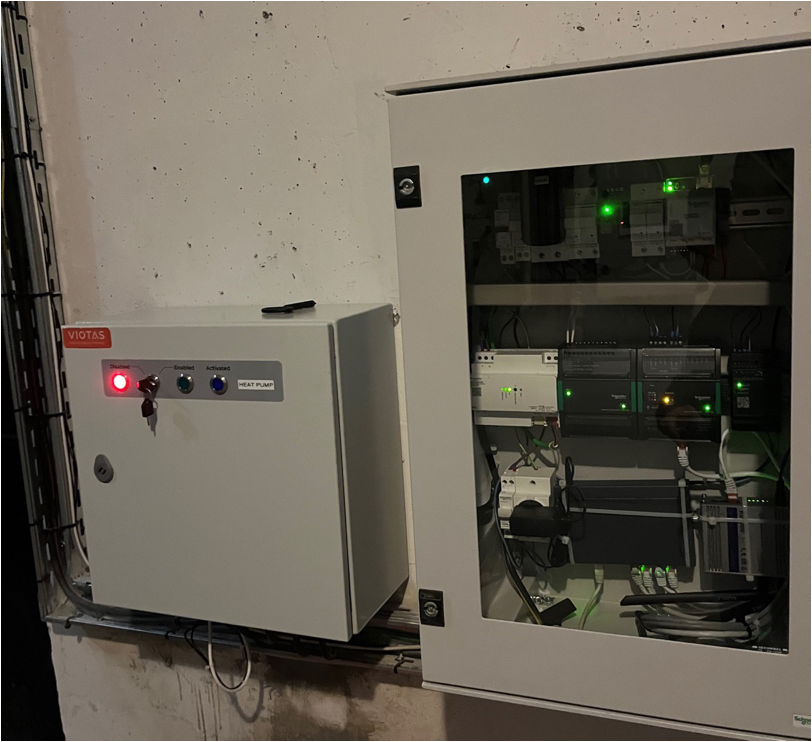
All this new equipment has been commissioned, all the data is received by iSCAN, and the setpoints can be modified remotely.

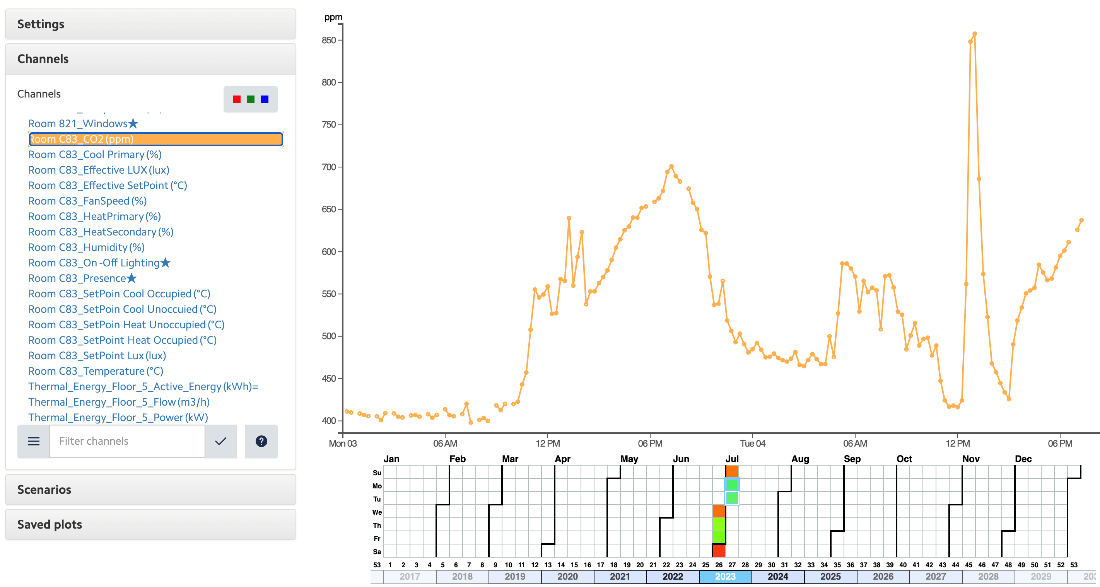
In parallel, IES team has built the physics-based building energy model, which is calibrated gradually when sensor and sub-meter data becomes available: data from the existing BMS, then from equipment added for the project. In simulations, this digital twin can predict scenarios with very good accuracy and can be used to study energy efficiency scenarios, in quantification of energy savings as well as in heating/cooling control strategies during the building’s operation.
During this summer and until next winter, the iBECOME team will be deploying and trialling all the services of the vBMS including:
- Energy-comfort optimisation in the rooms on floor 5 (training centre) and 8 (offices, meeting and break rooms)
- Energy-visual comfort optimisation on a few rooms with different uses
- Fault Detection and Diagnosis on the air handling units
- Predictive maintenance on the heat pump
- Demand response demonstration also on the heat pump
- Measurement and Verification
- What-if scenarios
iBECOME Impact
After simulating the energy-comfort optimisation scenario, we found that there is potential in the building to introduce up to 10-15% heating energy savings while improving thermal comfort. Moreover, we target to improve illuminance, CO2 concentration and smart readiness indicator by 10%, as well as reduce the CO2 emissions and cut down energy bills by 15%, with a payback period of less than 3 years.
Stay tuned to find out more about the innovative services demonstration in World Trade Center.

